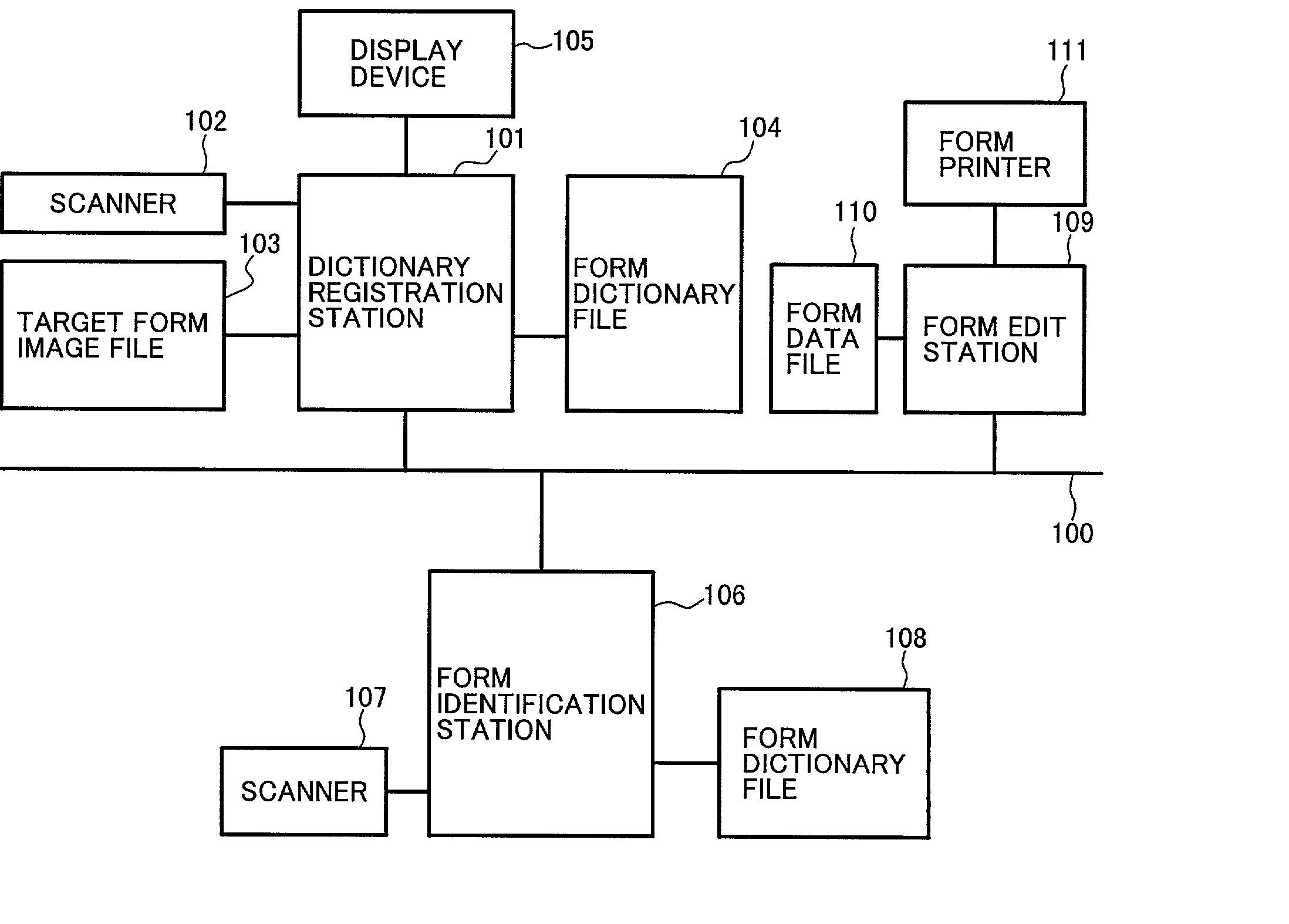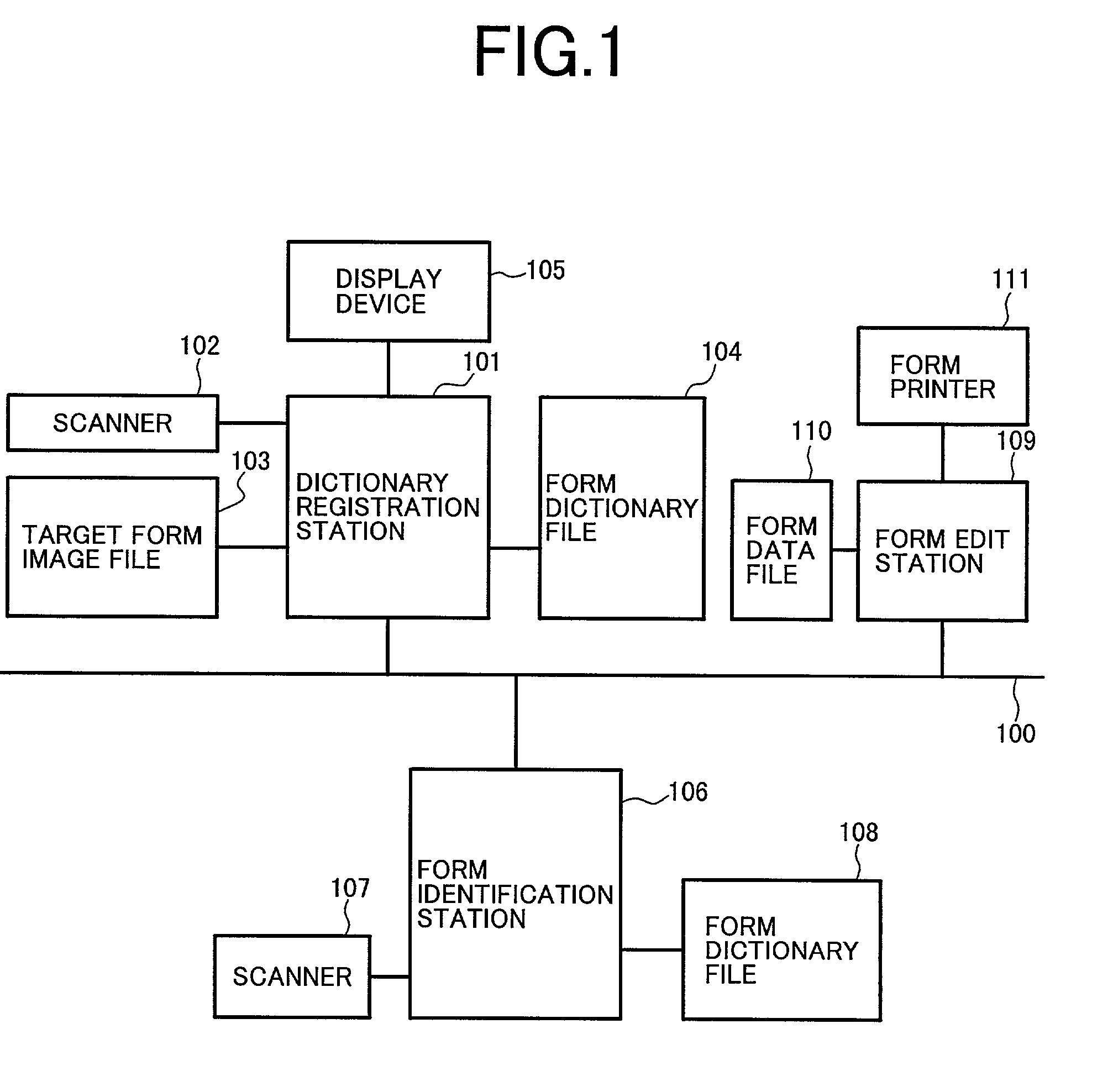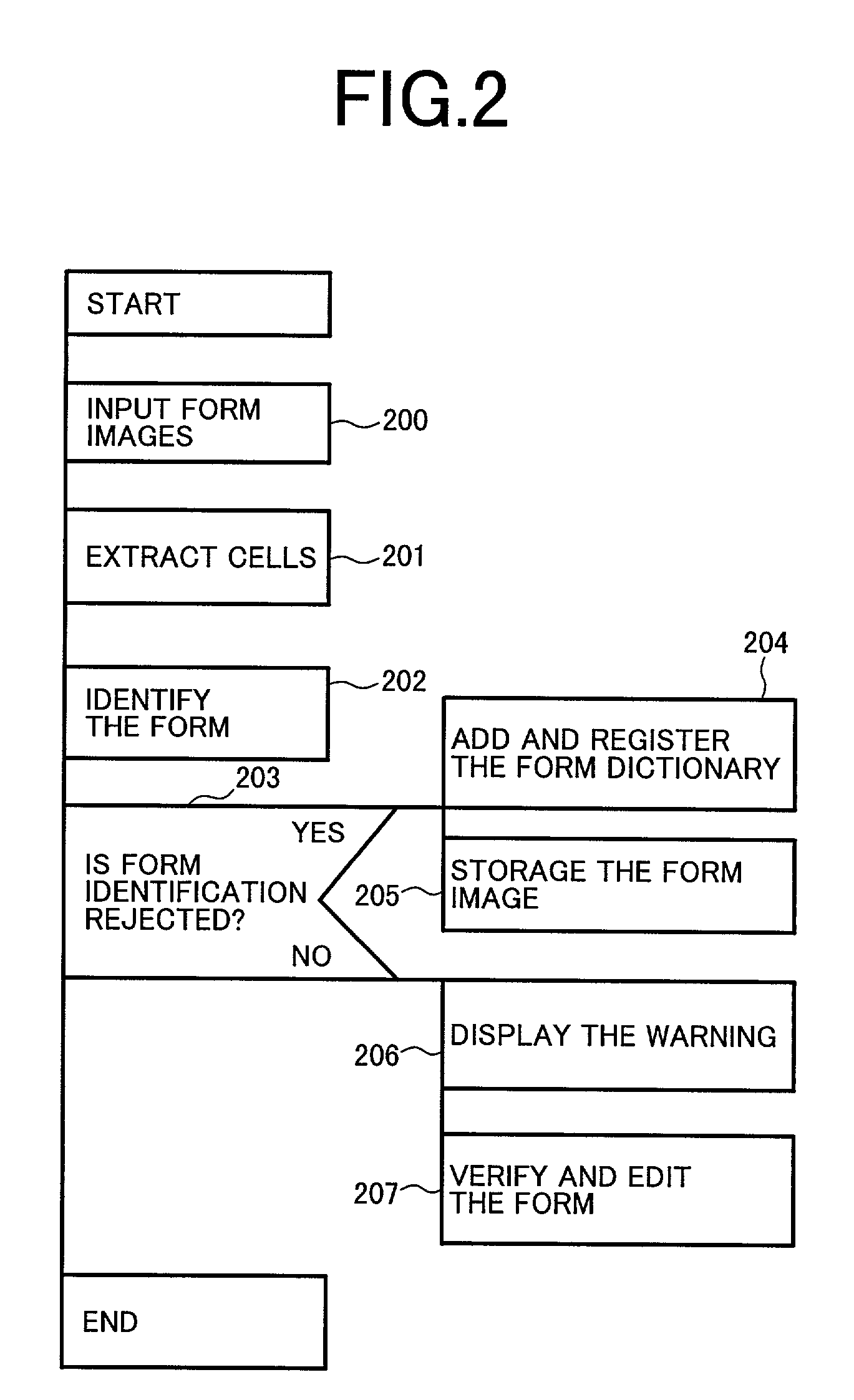Form identification method
a form identification and rectangle technology, applied in the field of form identification methods, can solve the problems of unstable operation of extracting each rectangle in the form, and no consideration is given with respect to the features of lines, character lines, cells which are peculiar to the form imag
- Summary
- Abstract
- Description
- Claims
- Application Information
AI Technical Summary
Benefits of technology
Problems solved by technology
Method used
Image
Examples
Embodiment Construction
[0057] Some embodiments of a form identification method and a form registration method according to the invention will be described in detail hereinbelow with reference to the drawings.
[0058] FIG. 1 is a block diagram showing an example of a construction of a form identification system for making a form identification and a form registration according to the embodiment of the invention. In FIG. 1, reference numeral 100 denotes a communication network; 101 a dictionary registration station; 102 and 107 scanners; 103 a registration target form image file; 104 and 108 form dictionary files; 105 a display device; 106 a form identification station; 109 a form edit station; 110 a form data file; and 111 a form printer.
[0059] The form identification system shown in FIG. 1 is constructed by connecting the dictionary registration station 101, form identification station 106, and form edit station 109 via the communication network 100, and those stations can mutually operate in an interlockin...
PUM
 Login to View More
Login to View More Abstract
Description
Claims
Application Information
 Login to View More
Login to View More - R&D
- Intellectual Property
- Life Sciences
- Materials
- Tech Scout
- Unparalleled Data Quality
- Higher Quality Content
- 60% Fewer Hallucinations
Browse by: Latest US Patents, China's latest patents, Technical Efficacy Thesaurus, Application Domain, Technology Topic, Popular Technical Reports.
© 2025 PatSnap. All rights reserved.Legal|Privacy policy|Modern Slavery Act Transparency Statement|Sitemap|About US| Contact US: help@patsnap.com



